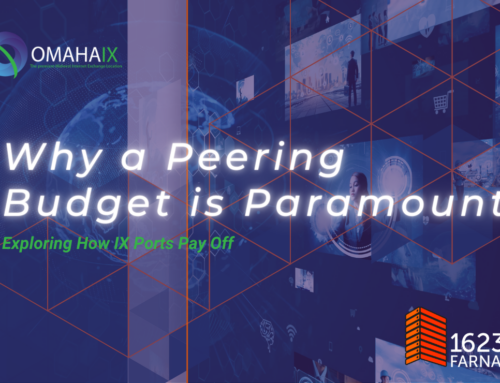In the 15 seconds or so it takes to read this sentence, another company somewhere in the world will fall victim to a ransomware attack. According to statistics reported by Dataprot.net, there are four ransomware attacks on global businesses every minute. If that doesn’t keep you awake at night, consider these other disturbing findings: More than half a million new pieces of malware are detected every day, and experts say there are more than a billion malware programs circulating in cyberspace.
It’s no wonder that a recent survey by the Small Business Administration found that nearly 9 out of 10 business owners – 88% — believed their company was vulnerable to cyber attacks. According to the latest available Internet Crime Report from the FBI, cybercrime cost the U.S. economy more than $2.5 billion in 2020 alone.
While cybercrime remains the greatest risk for most operators, not all threats to your data are man-made. Earthquakes, hurricanes, tornadoes and other weather-related incidents could knock you offline just like a cyber attack. Plus, with the increasing frequency of extreme weather events triggering natural disasters on an unprecedented scale, the chances of a weather-related disruption are greater than ever.
In today’s increasingly high-threat environment, IT security and resilience should be top of mind for all network operators. Safeguarding your network is one of the data center’s biggest challenges — and greatest responsibilities.
Networking Made Safer
Physical security is the first and often best line of defense. A data center typically uses a range of physical security systems to prevent unauthorized access via exterior doorways. These can include everything from a simple lock and key, to video surveillance throughout the property, to sophisticated biometric devices like fingerprint scanners. Many data centers also employ uniformed guards to patrol the facility and prevent break-ins.
Physical security also means protecting the facility against natural disasters. This might include redundant power and cooling systems to prevent interruptions if the grid goes down in a storm. Most data centers are built to the highest architectural standards for greater survivability in earthquakes or the severe winds of a hurricane or tornado.
Physical security, however, is just the first step. Truly protecting your data means preventing cyber attacks that could come from anywhere in cyberspace. If you have worked with a data center before, you probably already know that strict protocols are in place to prevent one customer from being able to access the account information of other customers. Moreover, data center technicians have access to an entire suite of software packages to monitor network traffic and identify any suspicious activity. If caught early enough, an attack can be contained before it impacts the networks housed there.
These are some of the basic safeguards in place at most data centers. However, different customers, such as businesses in highly regulated industries like financial services or healthcare, require much greater levels of security and availability. The right data center provider will be compliant and secure enough to meet individual needs.
This kind of data protection isn’t the only kind of measure that needs to be in place to keep IT up and running — there’s another side to networking and data security that must be addressed for systems to be trustable. In fact, much of day-to-day digital success comes down not only to establishing security, but reliability as well.
Establishing IT Reliability
When considering housing your network at a data center, you might hear reference to the terms Tier 1, Tier 2 and Tier 3. These indicate the level of a data center’s capabilities regarding redundancy, reliability and uptime. Tier 1 is the first level of data center redundancy, and it offers one path for power and cooling with no redundancies..
Tier 2 is the most common level of reliability for businesses at colocation facilities. In a Tier 2 situation, the business typically has its own infrastructure, but requires some redundancy from its data center partner. Tier 3 data centers utilize dual power and cooling systems, ensuring redundancy in case a system should malfunction or require maintenance. Tier 3 provides nearly 100 percent uptime, or about 1.6 hours of downtime annually. Tier 4 data centers offer redundancy on all systems, with downtime about half that of a Tier 3 data center.
One key method of increasing redundancy and reliability is establishing a peering relationship through an internet exchange like Omaha IX. Peering — directly connecting two or more networks to transmit data via switches or direct fiber optic cables between individual suites or racks — effectively creates a much more redundant network. Since peering occurs over a direct connection, traffic over the network won’t be affected by a DDoS or other malware attack on an ISP. Although peering can’t prevent all malware attacks, it can significantly reduce the risk of internet-based incidents. Peering also offers access to a host of different routes through different peers, meaning that even if a section of a network goes down, it can be routed around quickly and effectively. To learn more about the enhanced reliability, security and other advantages of Peering, read more HERE.
The need for data center security has never been greater, but the good news is that data center providers are nearly as tenacious and resourceful as the world is chaotic, and most data center facilities are strong enough to survive a direct hit from even the most powerful force. Your best defense against disaster, natural or manmade, is a trusted data center partner with the expertise and resources to provide the level of security you need.
Contact us now and start sleeping better tonight.



